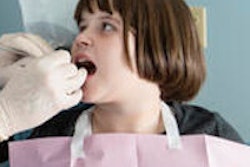
Halitosis is often a cause for embarrassment for some patients, but informing them about their condition is the best way to help alleviate the problem. No one wants to have bad breath, so if patients are aware of their circumstance, they will be more likely to listen to their dentist's advice and take action.
First, it is important to consider their feelings. Instead of saying, "You have halitosis," after an examination, explain to them that they "exhibit signs of halitosis." Emphasize that the problem is treatable and not permanent.
As their dentist, once you have identified the cause of the problem, you can develop a treatment plan to help eliminate it. Here are some tips for helping patients who suffer from halitosis:
Good oral hygiene is imperative for avoiding bad breath. Regular cleanings (at least twice a year) with a dentist or dental hygienist are essential. It's also important to remind patients that flossing is key and that removing buildup between teeth twice a day helps alleviate bad breath.
Educate patients on the different kinds of dental cleanings. Most patients don't know that there is more than one kind of dental cleaning. In treating halitosis, it's crucial to provide deep cleanings (a process that typically requires numbing and usually takes two to four visits) to remove tartar under the gums, followed up by regular oral hygiene checkups every six months.
Food may be a factor in bad breath. Certain foods contribute to objectionable mouth odor, so it's important to remind patients that eating garlic and onions, for example, should be avoided. Not skipping meals is also helpful in preventing halitosis. Eating helps remove bacteria on the tongue and stimulates the washing action of saliva, which helps avoid bad breath. Furthermore, constant snacking is bad for oral hygiene and breath since saliva doesn't have time in between meals to wash away food naturally. It's also important to emphasize that patients should drink water regularly, especially with their meals.
Mouthwashes do not have a long-lasting effect on bad breath. Instead, suggest that patients rinse with a hydrogen peroxide wash, which completely cures halitosis in some individuals. Mix one part water with one part hydrogen peroxide, and add a little baking soda and sea salt. Rinse for 30 seconds and spit. The hydrogen peroxide wash is meant to be used twice daily, and it's important to remind patients that hydrogen peroxide is not meant to be ingested.
Provide patients with quick fixes such as chewing sugarless gums. Sweetened mints increase the amount of sugar in saliva, which feeds the bacteria that cause bad breath, while chewing gum increases salivary flow, which has a bathing or cleansing effect on teeth.
Halitosis may also be a sign of a serious medical disorder, so if you determine that a patient's mouth is healthy, refer your patient to his or her general doctor for further examination.
Although many individuals worry about bad breath, a much smaller percentage actually suffer from this chronic condition. Whether your patient is concerned about objectionable odors or actually has symptoms of halitosis, it's essential to acknowledge your patient's feelings and offer solutions to help alleviate the problem.
The good news is that the condition is easily treatable, and both the patient and the doctor can take steps to improve the matter.
Lee Gause, D.D.S., is head of Smile Design Manhattan, a New York-based provider of general, cosmetic, and implant dental care. He is a member of various dental associations, including the ADA, the American Academy of Cosmetic Dentistry, the International College of Oral Implantologists, and the New York Invisalign Study Group.
Copyright © 2009 DrBicuspid.com



















